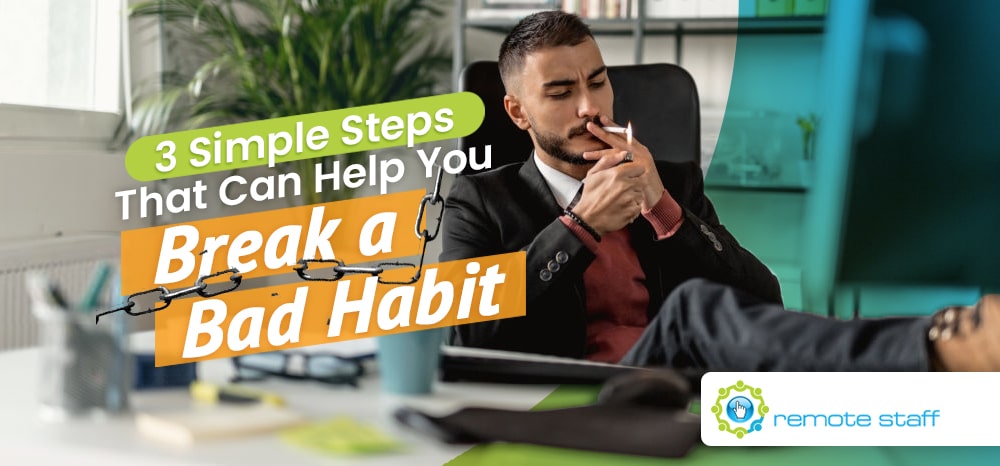There’s something to be said about the start of a new year. For a lot of people, the prospect of a fresh start provides hope for new beginnings, hence the tradition of making new year’s resolutions.
I’m not particularly keen on such since I think that you can choose to make significant changes in your life whenever the need arises. Still, this is as good a time as any to talk about how we can go about such.
So, let’s talk about resolutions. They typically include losing weight, quitting smoking, spending more time with friends and family, and so on, right? Unfortunately, very few people actually succeed in carrying them out.
Why? Well, despite how good your intentions are, having no concrete plans or even a vague blueprint for moving forward will derail your efforts. You see, good or bad behaviour comes down to one thing: habits.
And in carrying out your resolutions, you will either need to build good habits or break bad ones. The latter, as most of us are aware, often turns out to be a lot harder than it sounds.
But it doesn’t have to be. So, today, we’ll talk about three simple steps that can help you break bad habits. And according to Charles Duhigg’s best-selling book “The Power of Habit,” these are:
1. Find the cue (and the routine that ensues).

The routine here pertains to the bad habit itself. For example, if you smoke, the routine could be stepping outside and lighting up.
The cue is a bit harder to identify. This is what triggers you to perform the routine.
So, the next time you get the urge to smoke, take a moment to write down five things that occurred shortly beforehand. What time of day is it? Who are you with? What happened prior?
Did you feel like smoking just after you had a heavy lunch? A stressful afternoon at work? Or did you want to light up while hanging out with friends who were smoking?
Once you’ve identified the cue, move on to the next step.
2. Identify the reward that you get from the routine.

Yes, even bad habits can be rewarding, at least temporarily. That’s what makes them so hard to break.
As with the previous step, write down all the emotions and impressions you get while engaging in the habit. Does it provide you with a distraction? A break from monotony? A reprieve from stress?
Or perhaps it calms you down, or energises you? Maybe the habit provides you with the social contact you crave after a long day at work?
Write down everything that comes to mind, even if they don’t make sense at the time. This could also take a few tries, so don’t get discouraged if you don’t get an answer right away.
3. Experiment with small changes until you derail the habit.

The point of this step is to disrupt your automatic patterns and to bring your behaviour under intentional control. This is also where your findings from the previous step come in.
Again, let’s say you’re trying to quit smoking and you discovered that a mid-afternoon cigarette lets you step away from the office for a bit. The habit lets you clear your head for a few minutes, so to speak.
So, instead of lighting up after a hectic afternoon, try simply heading out and taking a short walk. It’ll give you the same rewards: a break from the office and the walk will help refresh your mind.
If that sounds a little too drastic, you can try smoking with your non-dominant hand. This would make the habit feel a lot less compulsive or automatic. Thus, you’ll become more aware of your actions and have more control over them.
Once you succeed in breaking bad habits, you can go about developing good ones in their place. (Though that’s a topic for another time and another article.)
Say, you want to break the habit of taking on too much work so you can spend more time with your family. Once you manage to break that habit, you can learn to replace it with delegating more effectively.
With Remote Staff, we can help reinforce that habit by providing you with a rich pool of remote Filipino talent to help you get things done. Whether you need a virtual assistant, content writer, or graphic designer, we’ve got you covered.
Click here to schedule a callback with us today.
Serena has been working remotely and writing content for the better part of the last decade. To date, she's written for Pepper.ph and Mabuhay Magazine, among others, and has churned out more than a thousand articles on everything from The Basics of Stock Market Investing to How to Make Milk Tea-Flavored Taho at home. Hermits, aspiring hermits, and non-hermits with interesting project propositions may email her at serena.estrella10@gmail.com.
























 Zero Recruitment Fee
Zero Recruitment Fee